Posts by jim
Meet Our New Campaign Targeting Toxic Particulate Matter: “NO SAFE LEVEL”
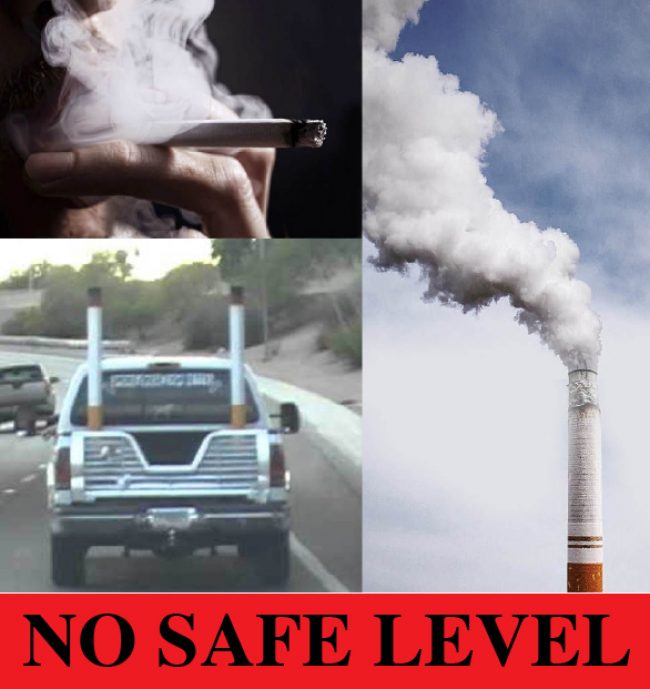
Toxic Particulate Matter – “PM” – is the New Lead
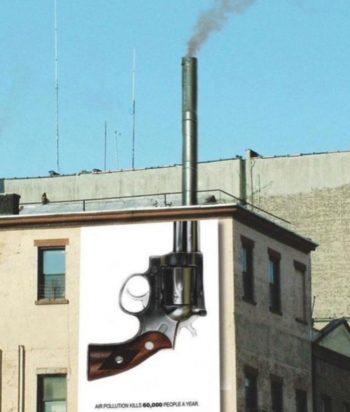
PM is the scientific name for industrial soot. It comes from burning things. Wood. Gasoline. Diesel. Coal. Waste. Everything that depends on on burning something, produces Particulate Matter: cars, trucks, buses, locomotives, boilers, furnaces, kilns, etc.
PM pollution is tiny. It’s much smaller than nature’s dust particles that our nose hairs, throat and lungs have evolved to handle most of the time. Because its so small PM pollution can actually pass through your lungs’ lining and goes directly into your bloodstream. From there it goes to any organ it’s carried to – the liver, the reproductive system, the brain.
Numerous studies have shown the terrible impact of PM pollution on human lungs and hearts.It causes heart attacks, strokes, asthma and COPD. More recent studies have shown a whole new threat. Exposure to PM is now linked to AHAD and Austim in children, and Dementia and Parkinson’s disease in adults. Immune system and reproductive organ damage have also been ties to PM exposure. Like lead in paint and gasoline, this pollution can do damage to a person’s social and intellectual capacities, not just physical ones

PUBLIC INFO & BRAINSTORMING SESSION:
The Dangers of PM Pollution and What We Can Do About It in DFW
Saturday, December 9th
2 – 4 pm
2900 Live Oak in East Dallas
ALL ARE WELCOME
This year the most comprehensive study on PM pollution health effects ever produced was published by Harvard’s School of Public Health. It covered 60 million people over 12 years.
It found significant health damage occurring at levels well below the current EPA standard and concluded there is no “safe” level of exposure to PM pollution. That is, there is no exposure that is not capable of doing some harm to you, no matter how small.
That same study found African-American seniors were three times more likely to die from PM exposure than any other group, with Latinos and Asians also suffering disproportionately. “Point Sources” (smokestacks) of PM are more likely to be in located in low-income communities of color. People of color are more likely to ride diesel-powered buses used for public transit or live along PM-spewing freeways. There’s no other type of pollution that’s linked so closely to how “undesirable” industries and people were forced to live next to one another over the decades.
Here in DFW we’ve flirted with high regional levels of PM pollution but we really don’t know the extent of it since the EPA and State only have four PM monitors for the entire DFW area of seven million people.
That’s why our first job is to help map PM pollution hot spots in DFW. Downwinders is building a “Citizen’s Guide to PM Pollution” that identifies all the largest sources of PM pollution – factories, railways, freeways, transit and school bus routes.
We’re purchasing portable PM pollution monitors citizens can use to police their own neighborhoods and helping to build a new monitoring network that cities can use to track events like the one on Oct 19th – that still remains a mystery.
What can be done in DFW to reduce our exposure to PM pollution? New controls on industry of course, including the cement kilns and coal plants. But also electrification of bus fleets, buffer zones beside freeways, and a detangling of pollution and people in places like West and South Dallas and the Northside of Fort Worth that require pushing the reset button on local planning.
Just turning bus route shelters 180° around so they don’t openly face street traffic has been found to reduce exposure to PM pollution by 30-50% for transit riders – one of the populations at highest risk for PM exposure.
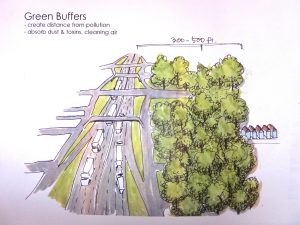
PM pollution is everywhere. It’s so ubiquitous we take it for granted. Much like people took cigarette smoking for granted 40 years ago. And that’s where we’re at with this campaign, at the very beginning of a massive public health education and advocacy effort, a no-smoking campaign for machines that also has the potential to reshape planning, politics, and culture. We have a huge task ahead of us. And we need your help.
Come join us on December 9th to learn more about this insidious from of air pollution and help us come-up with the best approaches for where to start reducing it in DFW.
Saturday, Dec. 9th 2-4 PM Meadows Conference Center 2900 Live Oak
The Texification of the EPA
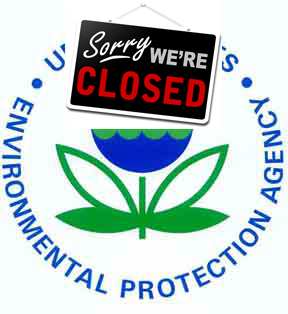
In the last year one thing the Trump Administration has done well is transplant the Texas Commission on Environmental Quality’s (TCEQ’s) approach to its job to the EPA.
Up until the last month or so that mimicking was in spirit only for the most part. But with two high-profile appointments, Trumps’ EPA has imported the very worst aspects of TCEQ’s cynical negligence.
Kathleen Hartnett-White was appointed by then Governor Rick Perry to be a TCEQ Commissioner on behalf of Big Ag in 2001 and served until 2007. She’s a West Texas cattle rancher who served as a National Cattleman’s Association lobbyist and with her stint on the TCEQ expanded her portfolio to include the usual laundry list of industry grievances.
In 2007, she voted to give the TXU an air permit for coal-fired power units at its Oak Grove site in Texas – the last coal plant permitted in the state.
“She has been an apologist for polluters, consistently siding with business interests instead of protecting public health. White worked to set a low bar as she lobbied for lax ozone standards and pushed through an inadequate anti-pollution plan. She also voted to approve TXU’s pollution-intensive Oak Grove coal units, ignoring evidence that emissions from the lignite plant could thwart North Texas’ efforts to meet air quality standards.” Sierra Club? Downwinders? Nope. Try the Dallas Morning News.
Downwinders’ representatives have been in small conference rooms negotiating with White over DFW clean air plans. She was no different in private than she is in public: industry can do no wrong and is never at fault.
 Up until recently she’s been making money as an industry mouthpiece at the Austin-based Texas Public Policy Foundation, funded by a who’s who of energy and utility companies, including Koch Industries Inc., Exxon Mobil Corp., and pieces of the former TXU, such as Luminant and Oncor.
Up until recently she’s been making money as an industry mouthpiece at the Austin-based Texas Public Policy Foundation, funded by a who’s who of energy and utility companies, including Koch Industries Inc., Exxon Mobil Corp., and pieces of the former TXU, such as Luminant and Oncor.
Now she heads up the White House Council on Environmental Quality, a position that coordinates environmental and energy policies across the federal government.
Michael Honeycutt is TCEQ’s Chief Toxicologist. You know him as the guy who says smog isn’t so bad for you. Same thing for Mercury, the risks of which are “overstated” and Arsenic, which is viewed unrealistically toxic by the (old) EPA.
Now he’s Head of the EPA’s Scientific Advisory Board. This is a little akin to putting the head of the Inquisition in charge of Galileo’s 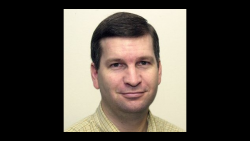 astronomy lab. In announcing his appointment EPA administrator Scott Pruitt praised Honeycutt as a “wonderful scientist.”
astronomy lab. In announcing his appointment EPA administrator Scott Pruitt praised Honeycutt as a “wonderful scientist.”
It’s the culmination of a long lobbying campaign to get Honeycutt imbedded somewhere in the federal regulatory apparatus. In 2016, he sent more than 100 emails to industry representatives, state air pollution regulators, university professors and scientists asking them to support his nomination to the Clean Air Scientific Advisory Committee. At the time, he wrote that it would be a “minor miracle” if he were selected. It took a major one with the election of Donald Trump.
These selections make it clear that the EPA is closed for business as long as the current crew is in charge. It won’t have the money to do its job, it won’t have the employees, and it won’t have the motivation. Indeed, the object is to dismantle the Agency.
After years of Republican statehouse control, this lazaire-faire approach to pollution is easily recognizable to us here in Texas. What’s new is its wholesale arrival in DC. Neither Bush Senior or W put these kind of science deniers in charge.
These appointments make it crystal clear that states or cities that want to protect air quality are on their own.
Mysterious Catastrophic Air Pollution Episode is Why DFW Needs its Own Air Sensor Network
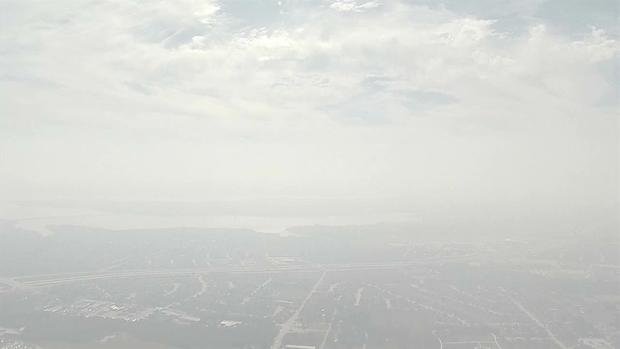
Not quite two weeks ago, on Thursday October 19th, something happened to throw local air quality conditions into the red zone for most of the day.
There was a inexplicable smokey haze extending along the limestone escarpment from Midlothian to Dallas and then north to Denton, sending Particulate Matter pollution soaring to Beijing levels and ozone readings so high the whole regional average went up a part per billion. Countless downwind residents complained to officials, FaceBooked, and Tweeted about “the smell of burning plastic” enveloping their neighborhoods with the smoke, which was so thick many thought the problem was just down the street.
 The 24-hour standard for Particulate Matter Pollution is 150 ug/m3. The annual standard is 12.
The 24-hour standard for Particulate Matter Pollution is 150 ug/m3. The annual standard is 12.

70 ppb is the new ozone standard.
The events took the Texas Commission on Environmental Quality completely by surprise. Commission computer forecasting had not predicted an Ozone Alert Day or warned of heavy PM pollution. Officials were playing catch-up for the rest of the day.
Now almost two weeks later nobody official knows what caused this Really Bad Air Day. Not the EPA. Not the Texas Commission on Environmental Quality. Not the DFW area citizens who breathed in the dirtiest air their lungs have seen all year.
Despite the sophisticated technology available to us in 2017, a single unexpected incident upwind of DFW can throw the entire North Texas air shed into the danger zone with no warning and no clue as to what initiated it.
Readings from state monitors were of no help until damage had already been done. As usual they were two hours or more behind in reporting. The numbers they were displaying at 12 noon were actually taken at 10 am. You had no idea what was going on in real time so that you might better protect yourself or family.
There are only three or four Particulate Matter pollution monitors in all of DFW. Even if you’d wanted to use the state’s current monitoring system to track this mystery plume, you couldn’t have done so. It doesn’t have that capability.
As inquiring reporters called, the TCEQ staff found a variety of things to blame. TCEQ suggested the smoke was from a Bastrop forest fire near Austin. But readings from monitors between Bastrop/Austin and Dallas show there was no problem south of Midlothian that day, while there was a huge problem north of there at the same time. Eyewitnesses who saw the plume on Thursday reported a thick narrow ribbon of a plume you’d see coming off a near-by source, not the sort of diffused cloud you’d expect to witness after traveling more than a hundred miles downwind. And then there’s that “burned-plastic smell.”
Then it was maybe one or more “controlled burns” in the Midlothian-Mansfield area. As it turns out, neither fire department found evidence of any permitted controlled burns in their own jurisdictions that could have cause so much pollution. Midlothian’s single permitted fire for the day was “the size of a coffee table” according to a department employee.
According to the Mansfield Fire Department “a fire” was reported to be located at Kimball Road and Hwy 287 just north of the Midlothian city limits. This is what’s at that intersection:

Please note the caution against open flames. Could a fracking site have produced the kind of particulate matter pollution and haze we saw on October 19th without methane or other kinds of pollution being released en masse as well? It doesn’t seem like it could. But what if the fracking site had been turned into a temporary waste incineration site for the day?
That’s not all. A satellite pic of the intersection and what’s around it reveals Kimball and Hwy 287 to be a kind of rogue’s gallery of potential suspects:
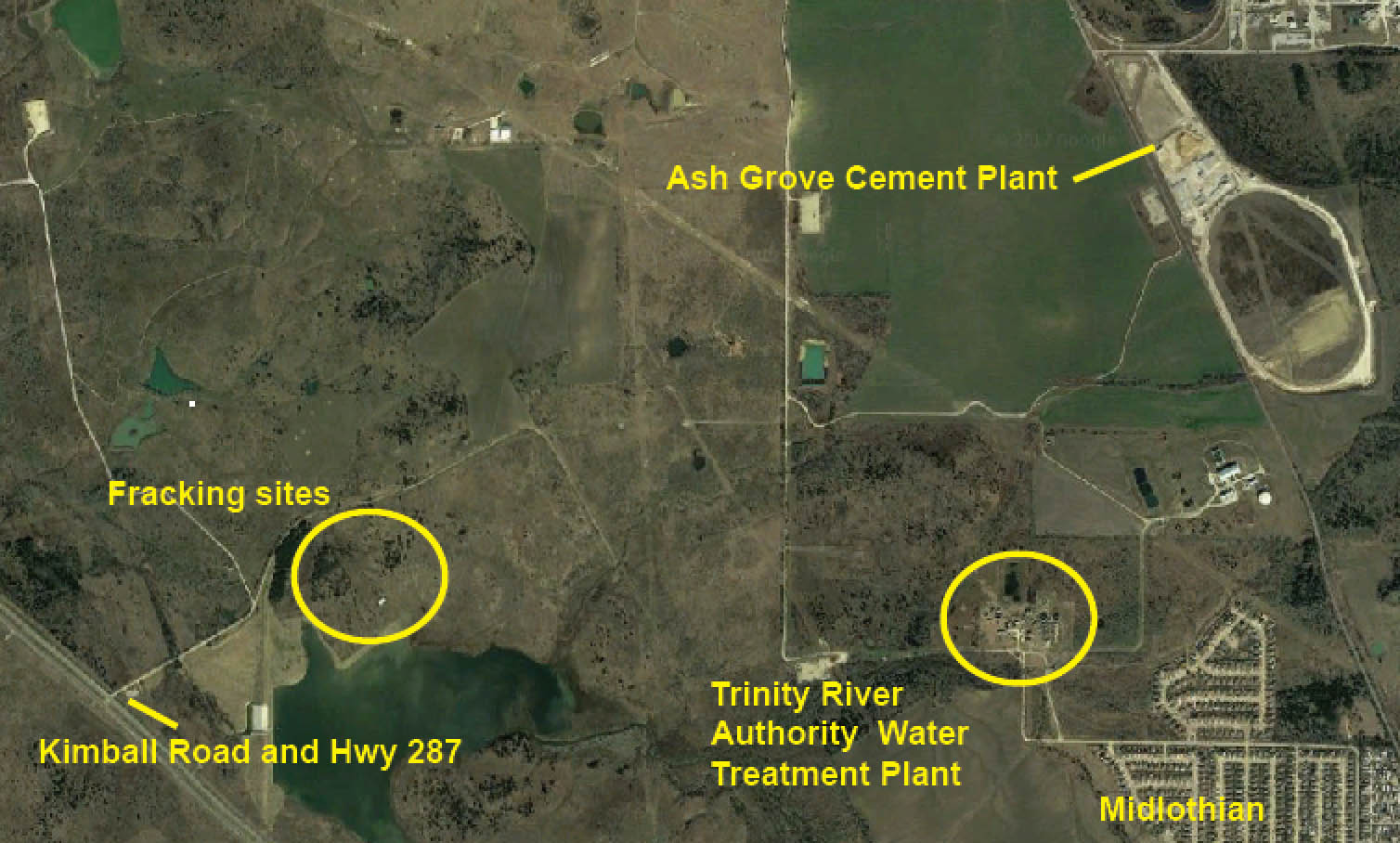
Besides the fracking sites you can be see in mid-drilling on this Google street level tour, the road leads to a Trinity River Authority Wastewater Treatment plant and the back door of the giant Ash Grove cement plant.
TRA is a shadowy, 60-year old regional bureaucracy that owns millions of acres of land, reservoirs, landfills, and wastewater-treatment facilities. It’s been in environmental hot water before. Wastewater treatment accumulates a lot of solids, and the TRA handles a lot of trash. It’s not inconceivable that it had something to do with the October 19th incident by thinking it could get away with an open burn on its own property.
Ditto for Ash Grove. Like the other two cement plants in Midlothian, Ash Grove’s kiln is allowed to burn industrial waste, including used oil, tires and plastics – remember the oft-cited “smell of burning plastic” citizens reported on the 19th? Waste-burning cement plants have had their wastes combust and cause huge fires before and each plant has its own emergency response crew which might be able to put out a fire without calling Midlothian.
There’s no proof Ash Grove, TRA or the fracking sites were the cause of the October 19th public health disaster. But there’s also no proof yet they didn’t cause the problem.
The truth is: there’s no official explanation for what made the air so dangerous to breathe on October 19th .
More truth: As of Friday, October 27th the TECQ had not even opened an official investigation into this matter – which again, sent Particulate Matter pollution to levels not seen outside SE Asia and single-handedly raised the regional ozone level.
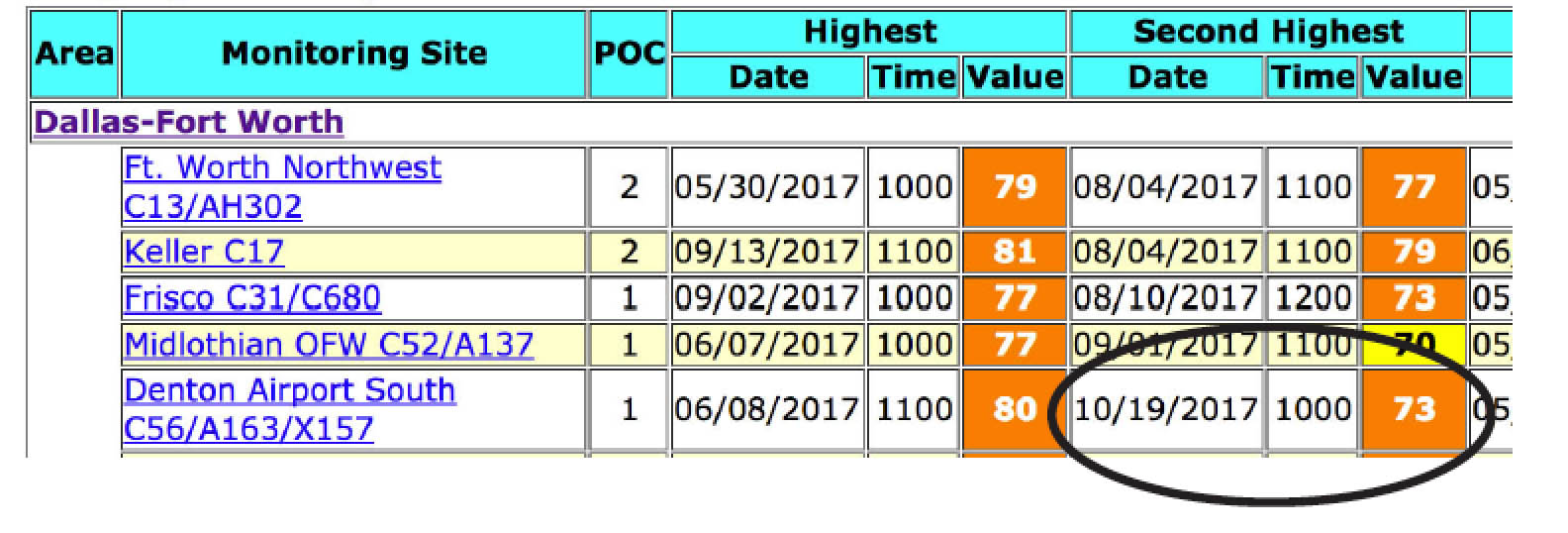
This is why Downwinders at Risk filed the first of what we’re sure will be a series of Texas Open Record Act requests last Friday seeking:
“Any and all printed or electronic documents and electronic media containing information concerning or related to ozone, particulate matter and/or haze air pollution readings and levels in the Dallas-Forth Worth non-attainment area on Thursday, October 19th 2017, including official ozone action warnings issued, complaints filed about air quality in the Dallas-Fort Worth area that day, photographs, satellite images, computer modeling, as well as all material related to any questions, inquiries, or investigations about air quality in DFW on October 19th anyone in the TCEQ, or contracted by TCEQ has been tasked to perform since October 19th or is still performing currently, and e-mails, letters, reports, telephone logs and notes, memos and all other material about October 19th air quality from 6 am Tuesday October 19th to Wednesday October 25th, 2017.”
TCEQ has until November 10th to respond. We’ll keep you posted.
In the meantime, this episode becomes Exhibit A in why DFW needs to catch-up with other metro areas and build its own network of high tech air quality sensors.
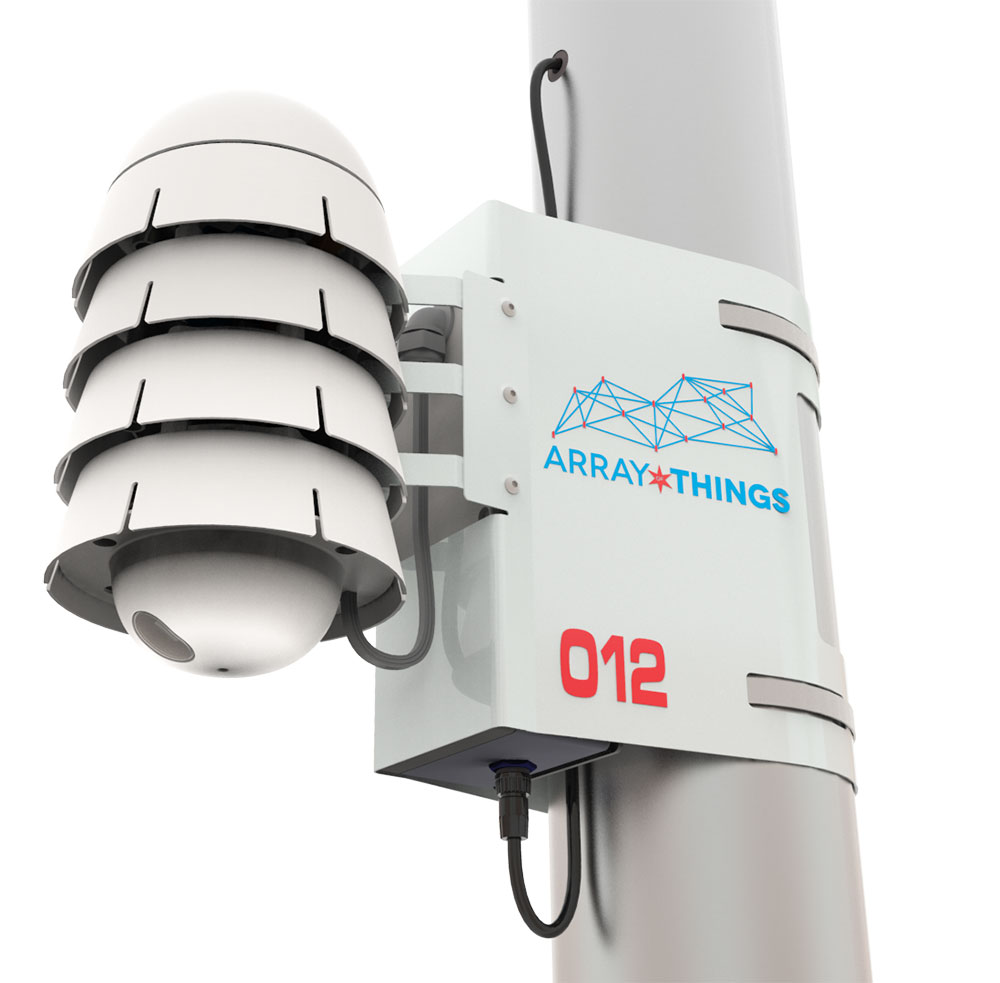
If such a grid had been in place, there would have been a real time warning of the PM and ozone pollution being generated shortly after the it started. There would have been a way to locate the source of the pollution right away and do something about it before it got worse, and there would have been a way to predict the plume’s course and warn those in its path before it got there – not two hours after it arrived.
In this sense a modern sensor grid is actually a pollution prevention device, an investigative tool, and an early warning system all rolled into one.
In a metropolitan area that’s been out of compliance with the Clean air Act for 27 years and counting over 14 million lungs are being held hostage by a state air quality monitoring system left over from the 1990’s. It’s being maintained by a state agency that’s run by polluters, officially thinks smog isn’t bad for you, and is cutting its air monitoring budget.
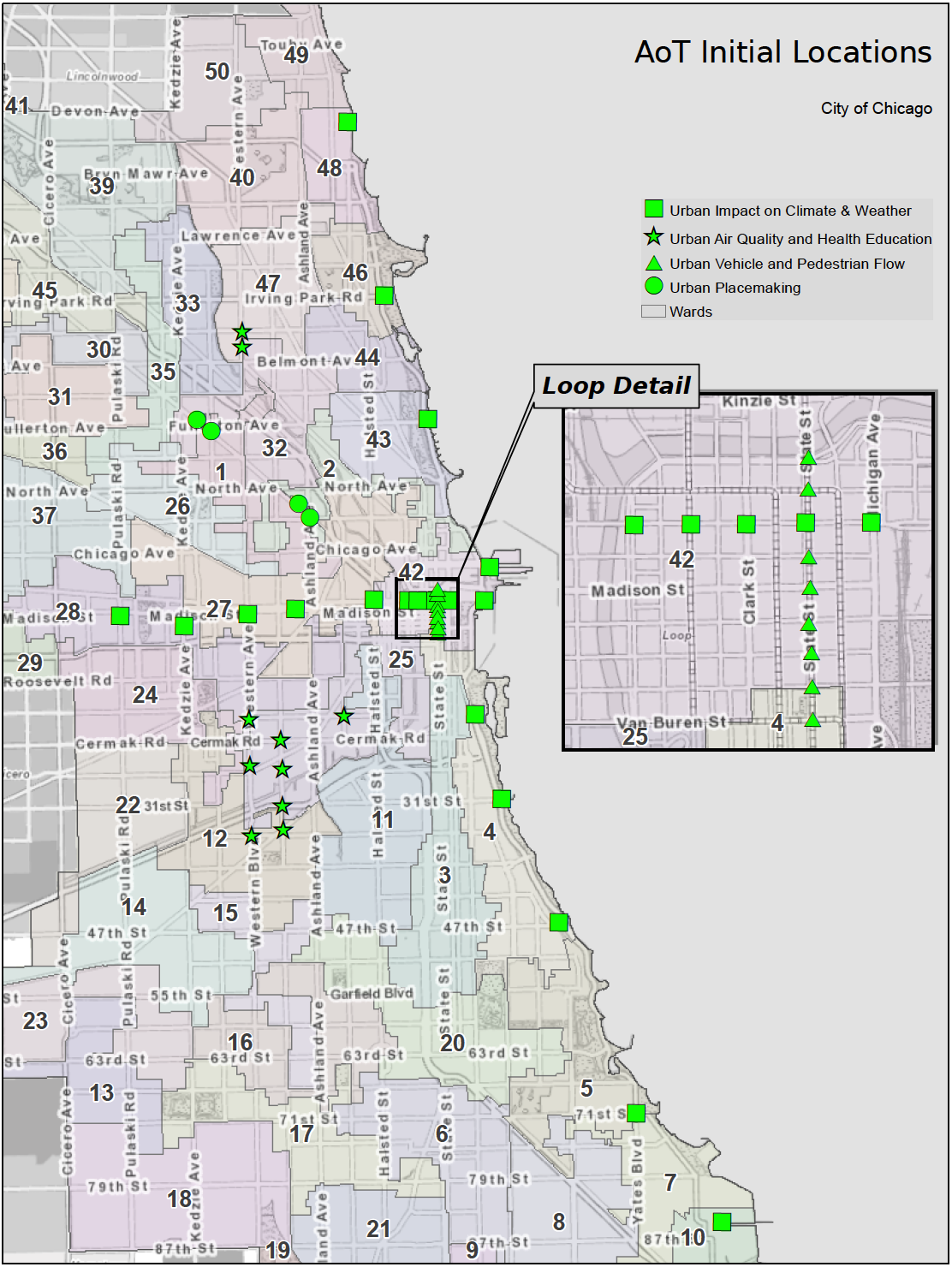 There’s no desire in Austin to update this obsolete system and no money to do so. If DFW officials want to utilize 21st Century technology to help them clean their air, they’re going to have to build their own network of air monitors – exactly the proposal the DFW Air Research Consortium was trying to get funded with a National Science Foundation grant. Close, but no cigar.
There’s no desire in Austin to update this obsolete system and no money to do so. If DFW officials want to utilize 21st Century technology to help them clean their air, they’re going to have to build their own network of air monitors – exactly the proposal the DFW Air Research Consortium was trying to get funded with a National Science Foundation grant. Close, but no cigar.
Without the NSF grant, local officials are going to need to get creative. Are there private businesses who might want to sponsor an app that could tell give you useful air quality info in exchange for naming rights: “Brought to you by the Nissan Leaf DFW Clean Air Network.” Are there local foundations that would contribute? What about local high-tech billionaire Mark Cuban? For less than a million bucks, DFW could have 500 Particulate Matter sensors that would be capable of of pinpointing a problem down to the street address.
Baltimore, Chicago, Chattanooga, Louisville, L.A. , Oakland, and Lafayette, Louisiana are all way ahead of DFW in building out their own local dense grid of air sensors. They’ve done it with a combination of private, government and academic know-how and financing.
We have as much, or more technical expertise and money than any of those locales and we should have more incentive given our chronic air pollution problem. There’s no reason we can’t build our own modern, more protective, more useful way of monitoring air pollution – even if the state isn’t interested. Not only can we do it, but in light of the events of October 19th, it should be considered a necessary act of public health self-defense.
Burning Plastic Campaign Gets “Stuff”ed
https://www.facebook.com/GAIAzerowaste/videos/10155080333930773/
Our efforts to stop plastic garbage burning in cement plants got a boost last week when the San-Francisco based Global Alliance for Incineration Alternatives (GAIA) kicked-off a national campaign with a video from the The “Story of Stuff” folks accompanying a pledge of opposition to the practice you and your group can sign online.
In July, we reported on a plan by DOW Chemical and Keep America Beautiful to encourage you to bag up those “hard-to-recycle” plastics and send them to a cement kiln to be burned without the expense of all those environmental controls you’d have to deal with at a legitimate waste disposal site. The two were offering US communities at least $50,000 in subsidies to go along with the idea.
This is already happening in Omaha, where 8,500 homes have filled 13,000 “Hefty Energy Bags” since the program’s launch a year ago. That’s resulted in more than 13,000 pounds of plastics being burned in a near-by cement kiln.
Since DFW is home to the largest concentration of cement plant manufacturing capacity in the country, and since those cement plants already burn industrial wastes in an attempt to cut their high fuel costs, the expectation is that this practice will sooner or later be proposed for North Texas cities. And indeed, when DOW and Keep America Beautiful held a press conference advocating plastics burning across the country this summer, there was a big red star right over DFW as part of the project’s projected growth.
The Story of Stuff video from GAIA actually takes the video DOW used to introduce its “energy bags” earlier this year and tweaks it to tell the story of “dirty energy bags.”
GAIA’s plastics pledge looks like this and any individual or group can sign on:
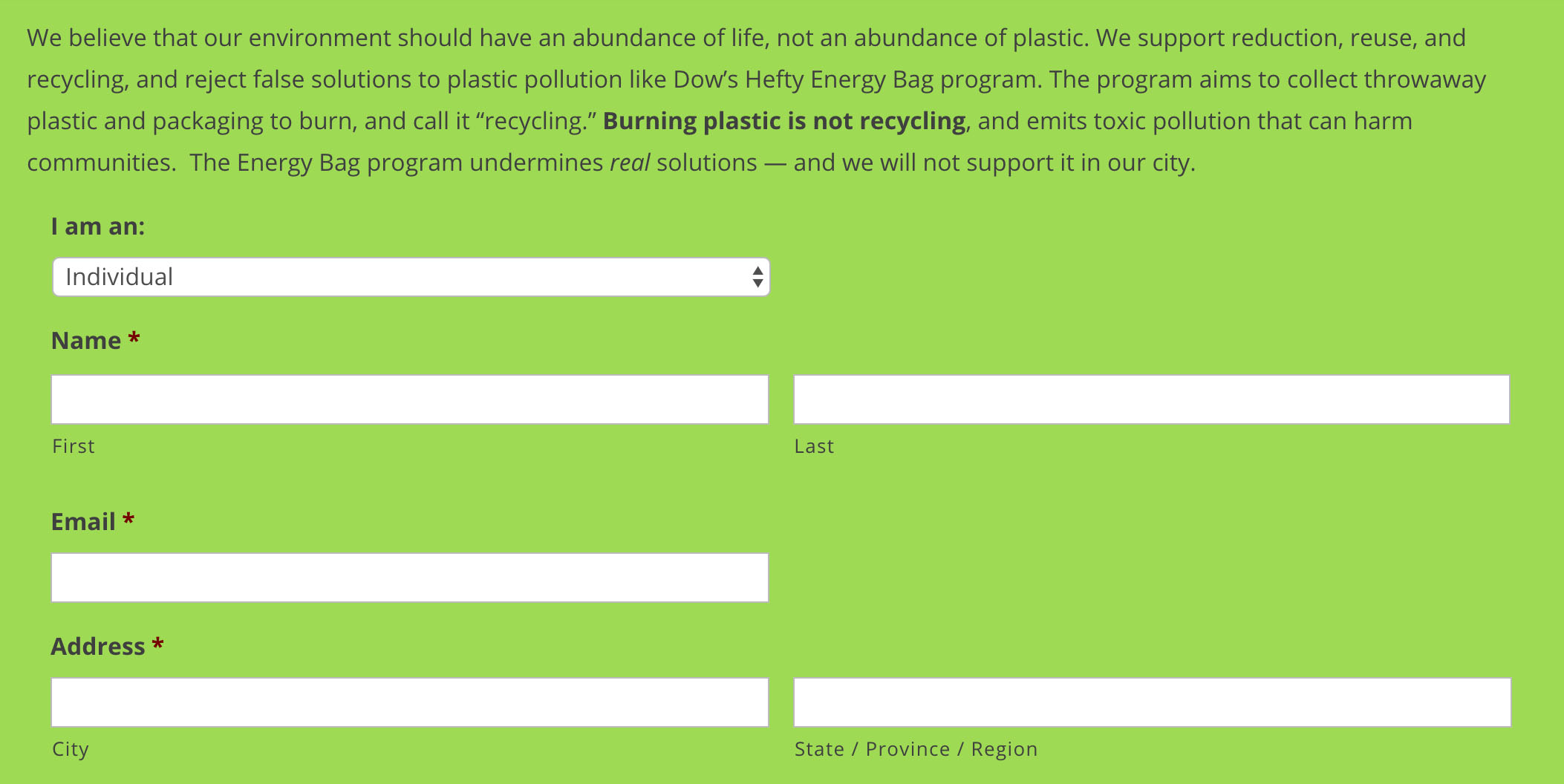
The GAIA website makes the case that single-use plastics already crowd our landfills and pollute our waterways, but burning them offers a greenwashing “relief valve” to allow continued, or even increased production of this kind of plastic.
Burning plastics can release Mercury, Dioxins and metals into the atmosphere – and your lungs. Cement plants are not equipped with the same pollution controls as a single-purpose garbage incinerator, and so they emit many times more of this kind of pollution than even a single-purpose garbage incinerator.
Plastic is made from fossil fuels, and in order to make sure we have a liveable planet for generations to come, we need to transition to a circular economy where our products can be easily reused or recycled, not produced from scratch using greenhouse gases.
Send a message that you will not support the Hefty Energy Bag in your city, and let’s expose the truth behind the bag!
Please Go online and sign the pledge.
It will take you all of 30 seconds, but it will send a message to stop this very bad idea before it gets too far.
And if you haven’t already, you can still send an email to the chair of Keep America Beautiful with our click ‘n send featured citizen action. Helen Lowman’s from Texas and maybe you can convince her this isn’t a very neighborly thing to do.
Meet the First Two Students of the Class of ’18

You might not think of Rap when you hear the name Downwinders, but the first two students enrolled in our 2018 College of Constructive Hell-Raising includes a local-Rhymensaurous-made-good who came home to do good for his Pleasant Grove neighborhood, and his longtime running buddy who aspires to build a new grassroots Southern Dallas constituency for change.
25 year-old Rikki Blu (on the right) has bounced around the nation following a musical career, including a recent stint on the West Coast where Sprite and SoundCloud featured tunes from his 2015 debut EP, Pleasant Grove.
But he moved back home to the Grove to raise a family and maybe, with some luck, organize a new group of South Dallas residents like himself who want more to see more progress made south of I-30. Joining him in this mission is his friend Marcellus George, an outspoken advocate for shaking-up the status quo. Together, they want to remake South Dallas politics with their non-profit Neighborhood Interest Committee.
They think the College of Constructive Hell-Raising can help them. “It’s a way to understand how not only to improve our own lives but others as well” said George.
He’s right. The College is North Texas’ only school devoted to teaching the principles of community organizing that can help whole neighborhoods better themselves. But it also helps its students think less like “activists” and more like “organizers,” encouraging the ability to imagine how a series of planned short-term steps can lead to larger, longer-term goals.
Besides learning the basics, a Who’s Who of veteran local community organizers fill gaps in recent DFW social justice history many students didn’t even know they had and provide successful examples in the real world of change on the ground – yes, even in Texas.
Veteran Dallas civil rights organizer Peter Johnson, local LBGT legends Don Maison and Patti Fink, environmental justice leader Luis Sepulveda, peace and anti-nuke organizer Mavis Belisle, original Bois D’arc Patriot John Fullenwider, and Sara Mokuria, co-founder of Mothers Against Police Brutality, are some of the advocates students will have access to during the course. As this list might suggest, although Downwinders at risk is dedicated to cleaner air, the College isn’t aimed just at environmentalists. Anyone interested in learning how they can use the techniques of community organizing to further their own cause is invited to attend.
A great example is Clarice Criss, Class of ’17 featured just last week on Channel 8 for her organic community garden in South Dallas that provides fresh, non-toxic fruits and veggies to families on WIC assistance. Criss, from one of Dallas most historic and distinguished Black families, has said “The College confirmed for me that I want to spend the rest of my life organizing to help people in underprivileged communities. I cried at graduation.”
This week the College began public enrollment for the Spring 2018 semester. You can apply here.
There are ten sessions in all. We meet twice a month from January to May at the Meadows Conference Center, Tuesday evenings, from 7 to 9 pm. A full schedule, the complete list of guest lecturers, and the application for the 2018 semester is online here.
Students are encouraged but not required to attend informal discussions with guest lecturers at the Bryan Street Tavern after class adjourns, over beer and pizza.
Preference will be given to existing DFW groups who want to better train volunteers or staff and help pay for enrollment with scholarships, but all are welcome. The cost is $200. It includes a book, and lots of reading material. No payment is required to apply. Scholarships are available, and applicants can indicate your interest in getting a full or half scholarship on the application.
Rikki and Marcellus know what they want to do with their College education. What would you do with yours? Join us for the 2018 class.
Brown, Big: 1971-2018
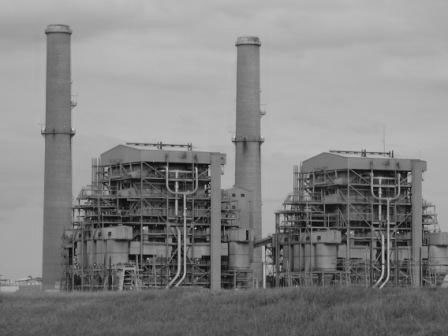 After years of declining fiscal health, the Big Brown lignite coal plant finally succumbed last Friday. An announcement was made by its most recent caretaker, Vistra Energy last Friday morning. The cause of death was obsolescence. It was 47.
After years of declining fiscal health, the Big Brown lignite coal plant finally succumbed last Friday. An announcement was made by its most recent caretaker, Vistra Energy last Friday morning. The cause of death was obsolescence. It was 47.
Controversial from its birth, the 1. 2 Gigawatt Big Brown lived up to its name and was Texas Utilities’ flagship power plant for decades. It began by burning 100% Lignite Coal, the mud-like fossil fuel native to East and Central Texas. By the end however, it was importing thousands of tons of “cleaner” Wyoming Powder Basin Coal in long freight trains to comply with interstate pollution rules.
Along with other coal-fired power plants in East Texas, Big Brown was citied for causing acid rain to by SMU Chemist George Crawford as early as the 1980’s. It was then discovered to be a major contributor t0 Dallas-Fort Worth smog, a fact reinforced by a 2008 study from another SMU professor and former EPA Regional Administrator Dr. Al Armendriz, and more recently by Dallas Medical Society’s Dr. Robert Haley in his 2015 report on ozone levels and public health in DFW. Public Citizen/Texas and the Sierra Club had been particularly hostile to the plant’s continued operation.
As coal lost favor as an energy source, Big Brown’s estimated lifespan had been the subject of countless rumors over the last decade. Towards the end the plant consistently refused modern technology which might have prolonged its life, such as Sulfur Dioxide scrubbers and Selective Catalytic Reduction for smog pollution.
The timing of the plant’s demise was seen as a major embarrassment to officials in the Trump Administration, who’ve promised to promote coal. On the same day as Vistra’s notice about Big Brown’s demise, Trump appointed known fossil fuel promoter Kathleen Hartnett White to lead the White House Council on Environmental Quality.
It was the third Texas coal plant to expire in less than a week. Big Brown was preceded in passing by the Monticello lignite plant, which announced its departure on October 6th. Vistra said its smaller Sandlow power plant near Bastrop was to be closed in 2018 as well.
In 2016, these three coal plants emitted a total of 166 million pounds of sulfur dioxide, 24 million pounds of nitrogen oxide, and 21 million tons of carbon dioxide pollution. Their absence during the 2018 “ozone season” could be the first time DFW stands a chance of complying with the Clean Air Act in 27 years.
Survivors, for now, include the coal-fired Martin Lake and Oak Grove power plants, as well as NRG’s Limestone power plant, southeast of DFW.
Birth, Sleep, Germs, & Race: New Science Reveals How Much We’re Affected by Bad Air
“Maternal exposure to ambient air pollution and fetal growth”
Universities of Edinburgh and Aberdeen, August 2017
Scientists studied maternal exposure to ambient concentrations of PM10, PM2.5 and nitrogen dioxide (NO2) for in utero fetal growth, size at birth and effect modification by smoking status.
“Dirty air can lead to women giving birth to smaller babies ,according to new research which also warns that exposure to air pollution during pregnancy rivals the damage done by smoking. Lead scientist Dr Tom Clemens explained that his team’s findings showed that “a foetus with a non-smoking mother exposed to high pollution levels is only slightly better off than one with a smoking mother exposed to low levels of pollution”. Clemens urged the World Health Organization (WHO) and the European Union to review their separate definitions of what emission levels are considered acceptable.“
“Air Pollution and the Microbiome” 
University of Milan, September 2017
This is the first study to look at how air pollution levels relate to types of respiratory microbe in healthy people.
“Exposure to air pollution correlated with differences in the species of bacteria living in our respiratory tracts. Higher levels of particulates in the air from three days before sampling correlated with a lower diversity of bacteria in the nasal swabs. The concentration of Actinobacteria, the dominant group in a healthy microbiome, was lower in volunteers exposed to higher levels of pollution. The part that these bacteria play in the body is not yet clear, but they are known to produce compounds with antimicrobial and anti-inflammatory properties. Another group of bacteria that can cause harmful respiratory infections, Moraxella, was typically found in greater concentrations in people exposed to higher pollution levels.” This is interesting because other studies have linked both air pollution AND gut bacteria to Autism.
 “Relation of Air Pollution to Sleep”
“Relation of Air Pollution to Sleep”
University of Washington, September 2017
A study linking air pollution to sleep efficiency, which is determined by comparing the amount of time participants spend sleeping at night to the time they spend awake.
“After collecting air pollution data in six U.S. cities over the course of five years, researchers analyzed the sleeping patterns of 1,863 participants—all of whom lived near those cities—over a span of seven days and found higher levels of nitrogen dioxide and particulates called PM 2.5 were linked to lower sleep efficiency. Further examination found that the highest levels of nitrogen dioxide increased the participants’ chances of suffering from low sleep efficiency by nearly 60 percent. The highest levels of PM 2.5s increased the odds of poor sleep by nearly 50 percent. Researchers also found the more participants were exposed to air pollution, the more hours in a day they spent awake.”

“Changes in Transportation-Related air Pollution Exposures by Race-Ethnicity and Socioeconomic Status”
University of Washington, September, 2017
People of color are still far more likely to suffer from harmful air pollution than white people across the US and this disparity has barely improved in recent years, despite overall improvements in air quality.
Meet our New Board Members

We’re very excited to have five brand new board members and a staff scientist join us since the beginning of summer to help us launch our Downwinders 3.0 program work. Each has their own set of special skills and experiences that make us stronger. You’re going to be seeing a lot more of them as they become the faces of our campaigns and projects….
 Eka Asase Yaa is a science instructor, mother, urban farmer, author, educational consultant and naturalist. She’s a Dallas native and her love for science & environmental stewardship blossomed 13 years ago during college. After graduating with a BA in Environmental Studies, she began a teaching career as an Outdoor Education Instructor. Eka conducted environmental research as a Botanist intern for the US Forest Service in MiWok, California and a Whale Researcher Intern in Maui, Hawaii. She’s taught Science for DISD, charter and private schools. As an advocate for Texas native plants, She’s obtained a Native Landscape Design Certificate from the Native Plant Society of Texas. In 2014 she started her business, Sankofa Science Solutions which provides opportunities of laboratory and in the field learning that activates within each child the ability to be innovative and creative in the fields of STEM, utilizing Cultural Science that is relevant to the 21st Century Learner.
Eka Asase Yaa is a science instructor, mother, urban farmer, author, educational consultant and naturalist. She’s a Dallas native and her love for science & environmental stewardship blossomed 13 years ago during college. After graduating with a BA in Environmental Studies, she began a teaching career as an Outdoor Education Instructor. Eka conducted environmental research as a Botanist intern for the US Forest Service in MiWok, California and a Whale Researcher Intern in Maui, Hawaii. She’s taught Science for DISD, charter and private schools. As an advocate for Texas native plants, She’s obtained a Native Landscape Design Certificate from the Native Plant Society of Texas. In 2014 she started her business, Sankofa Science Solutions which provides opportunities of laboratory and in the field learning that activates within each child the ability to be innovative and creative in the fields of STEM, utilizing Cultural Science that is relevant to the 21st Century Learner.

Evelyn Mayo just graduated from Barnard College with a major in Environmental Science, and is now working on environmental justice concerns in the DFW area with Legal Aid of NW Texas’s new Community Revitalization Program. Besides doing environmental work, Evelyn loves to paint, hang out with her sister (Fran Mayo, 2017 College of Constructive Hell-Raising graduate), her dog Chunk, and cook. Although she’s relatively new to the Dallas area, she has family in Oklahoma and Austin so is not totally new to the region.

John Rath is a familiar figure to North Texas environmentalists. He’s a former Greater Dallas Sierra Club Chair and member of the Club’s Executive Committee, and he headed-up Keep Grapevine Beautiful. He has two great kids, Charlie and Sarah, and is still an avid hiker. John was way ahead of the curve in terms of his commuter habits. For two decades, he rode a bike 21 miles from Grapevine to Plano and back again. John has been a stalwart ally of Downwinders in Grapevine, herding its council to approval of its own Green Cement ordinance during the fight over hazardous waste burning in the Midlothian cement plants.
Shannon Gribble is currently a second year GIS student at Brookhaven College. She came to 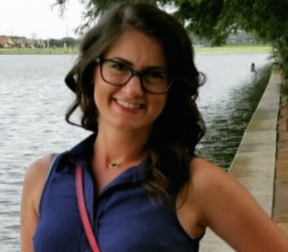 Downwinders through pure chance. In early June, while attending an unrelated happy hour, Shannon drifted away from her group of friends after hearing some scientific words being thrown around. The group she ran into was Downwinders at Risk at one of our Science and Socializing events. Without hesitation she instantly volunteered her skills and abilities to the group. The rest as they say, is history! Outside of school, Shannon spent thirteen years in Girl Scouts, enjoys traveling, collecting rocks, and doing her best to ride public transit or bike where she needs to go. Her goals are to help limit her carbon footprint and create a lasting “green” impact. She is also a champion tic-tac-toe player.
Downwinders through pure chance. In early June, while attending an unrelated happy hour, Shannon drifted away from her group of friends after hearing some scientific words being thrown around. The group she ran into was Downwinders at Risk at one of our Science and Socializing events. Without hesitation she instantly volunteered her skills and abilities to the group. The rest as they say, is history! Outside of school, Shannon spent thirteen years in Girl Scouts, enjoys traveling, collecting rocks, and doing her best to ride public transit or bike where she needs to go. Her goals are to help limit her carbon footprint and create a lasting “green” impact. She is also a champion tic-tac-toe player.

Maybe all you need to know about Amanda Poland is that she just made her first attempt to swim the English Channel a couple of weeks ago. She didn’t make it all the way across this time…but she’s already planning a second try. That energy is on display Monday thru Friday as a High School science teacher and swim coach at Plano West, where she’s also lobbying for a new air quality sensor as part of our regional monitoring network. Amanda was one of 15 graduates from the 2017 College of Constructive Hell-Raising, where she exhibited an uncanny talent to articulate principles of community organizing despite what she says is her relative newness to activism. She’s got four dogs, a cat, and a beta fish that doubles as a class pet. She’s “totes excited” to be on the board.

You already know how lucky we are to have engineer and UNT doctoral student Kari Northeim running our Wise County Ozone Project. Business degree. Engineering Degree. Soon-to-be Atmospheric Sciences degree. She’s married to an Emergency Room doc and has two great kids. What you might not guess from that description is that when she was 19 years old, she survived a single-engine plane crash that she says changed her life and “showed me that perseverance in times of trial is paramount to success.” Kari will be using our two new ozone monitors to make publishable science and history as part of the most ambitious citizen science project in North Texas.
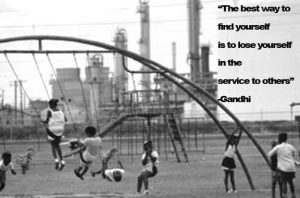
Announcing Downwinders 3.0

Downwinders is Regrouping, Renewing, and Regenerating. Almost half our new board is under 30. We have a new scientist. We have a new focus. Now we need you.
Many of you are aware of the time and effort Downwinders at Risk put into the unprecedented UNT Ozone Study which brought DFW elected officials and local atmospheric researchers together for the first time to operate the same computer model for air quality used exclusively by the State and EPA.
The results of that study provided a practical map for compliance with the current federal ozone standard: new controls on coal plants, cement kilns and gas facilities. It was shared by local officials with the EPA in hopes of that agency drafting a new DFW air plan that might finally address these major sources of local air pollution.
Those hopes were dashed by the presidential election last fall.
Because of a perfect storm of regulatory changes and politics, we now believe that the EPA won’t intervene on behalf of DFW air quality for the foreseeable future. It appears DFW will not even have to submit another serious plan to address smog for at least a decade – if then.
Over the last 20 years no other group has leveraged as much change from DFW federal clean air plans as Downwinders at Risk. We won the first comprehensive study of cement plant air pollution control technology by the state. We got new smog-control technology installed on the Midlothian cement plants. We used the “Green Cement” provision of another federal smog plan to stop the burning of hazardous waste in those cement plants and close the oldest, dirtest kilns in North Texas. In the most recent plan, we exposed the large impact of oil and gas pollution on local DFW smog levels.
But while we’ll continue to stay in the EPA’s ozone/smog regulatory loop through legal representation, we don’t see any opportunity to impact public policy using federal clean air plans the way we have in the past.
With this change, we had to rethink how we work toward better regional air quality in North Texas. How do we impact the most lives, in the biggest ways, with the resources we have?
We’ve come up with three strategies, all of them taking advantage of our long history of increasing the ability of local residents and governments to take on dirty air themselves.
____________________________________________
OUR NEW PRIORITIES
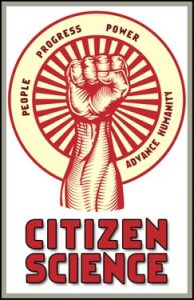
Build a modern, independent, and citizen-friendly regional air pollution monitoring network for DFW
You can’t fix problems unless you know about them, and this is a way to begin building a regional alternative to state monopoly of air quality expertise and resources.
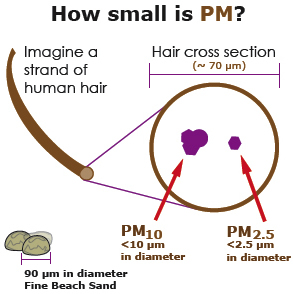
Identify, reduce, and eliminate health threats posed by widespread Particulate Matter (PM)pollution in DFW
PM is the new smog and local campaigns to reduce it can help a lot of people, especially those predominantly minority neighborhoods who’ve been dumped on the most.
Organize a grassroots campaign to restore local government zoning control of industrial hazards
A state government bought by polluters has gone too far in restricting the liberties of Texans and demolishing democracy at the local level. We’re fighting back.
____________________________________________
We co-founded the DFW Air Research Consortium last year with researchers from area universities and local governments with the idea of building a modern and locally-controlled air quality monitoring grid across DFW that can track pollution plumes in real time. This can become a powerful grassroots enforcement and education tool.
Downwinders itself bought two EPA-certified ozone monitors we’ll be using to specifically track smog levels in Wise County, where the State refuses to put a monitor despite evidence that’s where the region’s highest ozone readings are located.
This is more than just increasing the number of monitors – this is an opportunity to change the way people see air pollution affecting their lives. It’s also another opportunity to take what was the exclusive regulatory providence of an apathetic state government and give it to more concerned local governments.
We’re also beginning a new campaign focusing on microscopic pieces of soot known as Particulate Matter, or PM pollution. In recent years, PM pollution has been linked in the scientific literature to a wide variety of non-respiratory and cardiovascular diseases including ADHD, autism, Parkinson’s, dementia, and infertility. Like lead, many researchers believe there is no safe level of exposure to this kind of pollution.
Sources of PM pollution include any internal combustion engine, furnace, boiler and windswept piles of sand, or cement dust. Studies have found a correlation between proximity to a major source of PM pollution and increased risks of illness.
This is why other communities around the country are cracking down on idling trucks and buses and establishing buffer zones between major freeways and residences, parks and schools. We want to reduce the pollution as well as the exposure to it.
Finally, because there’s no hope of addressing air pollution from the oil and gas industry without any change in HB 40, the 2015 state law that took away local control of industrial zoning, we’ve begun a project aimed at building an alliance that challenges state overreach and promotes the restoration of traditional local control. Cities must have the right to protect their residents’ public safety and health. This campaign will challenge the status quo in both Austin and North Texas.
As always, they’ll also be campaigns we could not anticipate but have to wage. One example is the recent proposal by Dow Chemical to bag municipal trash for burning in the nation’s cement kilns. Dow has already targeted the local cement kilns in North Texas for this scheme, but Downwinders is pushing back hard and working with nationwide alliances to halt this project before it gets very far.
NOW WE NEED YOU

This coming THURSDAY is another North Texas Giving Day, a chance for your donations to be magnified by challenge grants and other incentives over the day. Because we’ve added responsibilities and staff, Downwinders at Risk needs this one to be our best, most productive Giving Day yet.
All transactions take place online that day. It’s simple to give and you can link to the Giving Day pay portal through our Downwinders’ website or FaceBook page beginning at 6 am on the 14th, and going all the way to midnight:
https://northtexasgivingday.org/npo/downwinders-at-risk-education-fund
DFW has been in continuous violation of the Clean Air Act for 26 years. We’re asking you to take a minute and contribute $26 to clean air work in the place where your lungs do most of their breathing.
We know hurricane season is testing the limits of our charitable giving, but $26 is all we’re asking. At a time when the state and federal government are intent on not protecting our air, Downwinders continues to be stubborn advocates for progress.
We deeply regret not being able to win a clean air plan for DFW in 2017 that might finally leave us in compliance with the Clean Air Act. But our long term goals remain the same. We hope you agree our work is worth your continued support. Thank you for your consideration.
STUDY: Even Very Low Levels of Air Pollution Increase Mental Illness in Children
 Most of us are used to hearing about the traditional physical ailments caused by breathing poisoned air, and even about the more recently-connected neurological impacts. But a new Swedish study is the first time we’ve seen a report linking air pollution to mental illness in children.
Most of us are used to hearing about the traditional physical ailments caused by breathing poisoned air, and even about the more recently-connected neurological impacts. But a new Swedish study is the first time we’ve seen a report linking air pollution to mental illness in children.
The new research, peer reviewed and published by the journal BMJ Open, found that relatively small increases in air pollution were associated with a significant increase in treated psychiatric problems. Its conclusions are consistent with a growing body of evidence that air pollution can affect mental and cognitive health.
Two things about this study stand out: 1) How rigorous it was. It examined the exposure levels of over 500,000 Swedish kids under 18 for more than three years; 2) The very low levels of air pollution linked to increased diagnosis and treatment. This is a familiar story, but it’s driven home by a new correlation to mental illness. The more we examine the impacts of toxins on people, the more we understand there is no “safe level” of exposure we can count on. The variety of nuanced adverse health effects will not be as obvious as cancer or asthma. Instead they might show up as depression, or the inability to conceive.
The pollutants studied were Particulate Matter and Nitrogen Dioxide. There’s already a large body of evidence linking PM pollution to neurological diseases and learning disabilities. Tiny PM uses the body’s bloodstream as a highway to hitchhike its way to any organ. Since so much of our blood goes to our brain, it’s not surprising that so many brain functions are affected by it.
“The results can mean that a lower concentration of air pollution, first and foremost from traffic, may reduce psychiatric disorders in children and adolescents,” said Anna Oudin, at Umeå University, who led the study. “I would be worried myself if I lived in an area with high air pollution.”
But has her own study shows, you don’t have to live in areas with “high air pollution” to be impacted.


